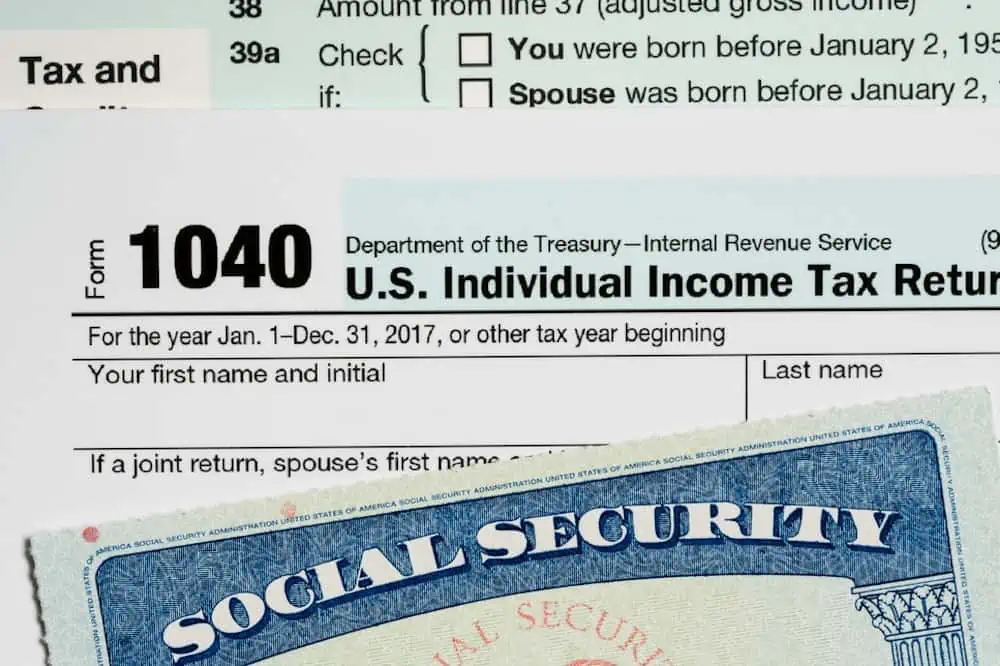When we daydream about retirement, we think about updates to our home or spending our days on beaches or visiting loved ones. But when we plan for retirement, we need to consider several less exciting but financially meaningful factors.
And one of the biggest is the health care costs we’ll incur in retirement.
There’s no way to predict the exact dollar amount you’ll spend on medical expenses as a retiree—we have no idea what conditions we might develop or even how long we’ll live. However, based on typical costs of various expenditures, you can create an educated estimate that ensures your savings will be in the ballpark of what you need.
Today, I’m going to go over the most common health care costs people can expect to pay in retirement. This information, combined with your knowledge of your medical history, can help you formulate an idea of what your future health care expenses may look like.
Featured Financial Products
Table of Contents
Health Care Expenses in Retirement

As you plan for your retirement medical costs, keep these different expense categories in mind. Most studies and data on retirement health care costs focus on Medicare insurance premiums and common health care costs, such as deductibles and coinsurance, all of which I’ll address. However, I’ll also dive into lesser-explored expenses, including over-the-counter medicines, specialty equipment, and long-term care.
1. Insurance Premiums (Medicare)

Health insurance premiums are typically the largest medical cost during retirement. According to T. Rowe Price, Medicare premiums (including prescription drug coverage) account for between 73% to 81% of the annual health care expenses for retirees, regardless of which type of Medicare coverage they have.
Let’s take a look at how much people normally spend on Medicare premiums.
Medicare Parts A and B (Original Medicare)

You’ll often see people refer to “Original Medicare,” which refers to two specific parts of Medicare: Part A and Part B. These are not competing options, but instead complementary plans that cover different health care needs.
Medicare Part A covers the most urgent and critical aspects of health care, including services at inpatient hospitals, skilled nursing facilities, inpatient rehabilitation centers / clinics, hospice centers, and select health care needs delivered in-home.
Around 99% of Medicare users don’t have to pay Part A health insurance premiums. (You can check your eligibility at Medicare.gov.)
Medicare Part B focuses more on preventive and medically necessary services and supplies, such as outpatient hospital services, physicians’ services, select home health services, durable medical equipment, and certain other medical and health services not covered by Medicare Part A.
Part B premiums, deductibles, and coinsurance rates are determined according to provisions of the Social Security Act every year. The standard monthly Medicare Part B premium for 2024 was set at $174.70 for individuals with a modified adjusted gross income (MAGI) of $103,000 or less. The premium amount increases with income. The highest bracket is individuals with a MAGI of $500,000 or more who have a monthly premium of $594.00. (Note that the premiums for people who only have immunosuppressive drug coverage are different.)
Related: 10 Best Vanguard Funds to Buy for the Everyday Investor
Medicare Part C (Medicare Advantage)

Medicare Part C (Medicare Advantage) is an alternative to Original Medicare. This option is largely a way of getting reduced Medicare coverage for a lower cost.
Users pay the plan’s premium and the monthly Part B premium. Some plans have a $0 premium and might help cover the full or partial cost of the Part B premium. Most plans include Part D drug coverage, which I’ll discuss in greater length in a moment.
Centers for Medicare & Medicaid Services (CMS) data puts the 2024 projected 2024 average premium for Medicare Advantage plans at $18.50 per month.
Note: People with Medicare Advantage can’t buy Medigap (which I’ll also explain later).
Related: 10 Best Fidelity Funds to Buy
Medicare Part D (Prescription Drug Coverage)

Medicare Part D is an optional program to pay for self-administered prescription drugs.
A person’s Medicare Part D monthly premium is based on the individual’s income; however, income-related monthly adjustments only affect around 8% of Part D beneficiaries that have Part B. Premiums are paid either directly to Medicare or taken out of Social Security checks. Any adjustments are deducted from your Social Security benefit check, regardless of how you typically pay your premium. (If the extra amount is more than the amount of your check, or you don’t receive Social Security, Railroad Retirement, or Office of Personnel Management benefits, you’ll be billed directly by Medicare.)
Related: When Should You Take Social Security?
For 2024, individuals with a MAGI of $103,000 or less, or couples filing jointly with a MAGI of $206,000 or less, have no income-related monthly adjustment amount. Above that, as MAGI crosses certain thresholds, the income-related monthly adjustment increases, to a maximum monthly adjustment of $81.00 for individuals with a MAGI of $500,000 or more (and couples filing jointly with a MAGI of $750,000 or more).
The CMS projects that 2024’s average total monthly premium for Part D coverage will be $55.50.
Related: The 10 Best Vanguard Index Funds to Buy
Medicare Supplement (Medigap)

Medicare Supplement (Medigap) isn’t part of the government’s Medicare program; instead, it’s supplemental coverage you can purchase from a private provider if you have Medicare Part A and B.
Medigap policies help pay the out-of-pocket expenses not covered by Original Medicare. How much coverage a person receives is policy-dependent, but it works with any hospital or doctor that accepts Medicare.
Policyholders usually pay between $80 to $300 per month, with costs varying substantially by state. The average 2024 premium amount for Medicare Supplement is $137.
Featured Financial Products
Related: The Best Retirement Plans for 2024 [Workplace + Individual]
2. Health Care Costs

Health insurance premiums likely will represent the lion’s share of your health care expenditures, but they certainly won’t be your only costs.
You still have deductibles to meet, coinsurance to pay, and various out-of-pocket expenses.
Related: Retired But Too Young For Medicare? 9 Healthcare Options for Early Retirees
Deductibles + Coinsurance

Part A: If you have Medicare Part A, being admitted to a hospital or another acute care facility begins what’s called a “benefit period,” which ends 60 days after you’ve been discharged. For 2024, the Medicare Part A inpatient hospital deductible for hospital admittance—which covers a beneficiary’s share of costs for the initial 60 days of care in a benefit period—was set at $1,632. Starting on the 61st day and ending on the 90th day, the beneficiary is required to pay a coinsurance amount of $408 per day.
If you have to stay for longer than 90 days, you can choose to pay full cost or draw from a pool of 60 additional “lifetime reserve days.” You pay a coinsurance of $816 per day when you use lifetime reserve days. And when you use a lifetime reserve day, it’s gone forever—you cannot accumulate additional lifetime reserve days.
Part B: The 2024 annual deductible for all Medicare Part B beneficiaries was set at $240. Coinsurance is usually 20% of the cost for every Medicare-covered service or item after reaching the deductible.
Part C: Those who opt for Part C have varying deductibles, depending on the chosen plan, that range from $0 to over $1,000. Coinsurance rates vary by plan as well.
Part D: To explain Part D’s deductibles and coinsurance, we’ll need to discuss the “donut hole.”
Related: Is Your Retirement on Track? The Average 401(k) Balances By Age
Part D long had a coverage gap—commonly referred to as the “donut hole” for its lack of coverage between certain out-of-pocket prescription drug cost amounts—that dated back to Part D’s beginnings in 2006. Effectively, once you and your drug plan collectively spent a certain amount on covered drugs, you would enter a coverage gap, or the “hole” of the donut, in which the plan was limited on what it could pay out. You would only exit that gap once you hit a certain out-of-pocket limit and progressed to catastrophic coverage, where you would pay nothing for covered drugs for the rest of the year.
However, Medicare has been closing the donut hole. It still exists, though it’s much less punitive than it used to be. In 2024, you pay a $545 deductible. The coverage gap for 2024 is $5,030 in costs paid by you and your plan. Once in the gap, you pay 25% out-of-pocket for covered medications. You then reach catastrophic coverage at $8,000 in out-of-pocket costs and pay nothing for covered drugs until 2025. Starting in 2025, the Donut Hole will vanish. Part D enrollees will have a $590 deductible, then will pay 25% of total drug costs up to a $2,000 cap. (That cap will change each year based on the growth rate in per capita Part D costs.)
Medigap: Medigap deductibles vary by plan—and there are quite a few plans. Effective as of January 2024, the annual deductible amount for Plans F, G, and J was set to $2,800, and their out-of-pocket maximums are the same. The 2024 out-of-pocket limit for Plan K is $7,060. Plan L’s limit is $3,530. Once a person has reached the out-of-pocket limits for Plan K or L and the Part D deductible is met, the policies pay all of the covered services for the rest of the calendar year. Plan N, which is similar to Part D, has a copay of up to $20 for Part B physician office visits and up to $50 for visits to emergency rooms.
Related: 9 Best Fidelity Index Funds to Buy
Out-of-Pocket Costs

A T. Rowe Price paper provides estimates for out-of-pocket expenses based on 2024 Medicare premiums and the Health and Retirement Study.
The annual “medium cost” (half of retirees pay less) of out-of-pocket expenses for Medicare Parts A, B, and D is $700. The medium cost for retirees with Medicare Parts A, B, D, and Medigap is $900. Just keep in mind that the name “medium cost” implies that half of retirees will pay more. Indeed, the annual “very high cost” (1 in 10 retirees will pay more than this number) is $5,100 with Medicare Parts A, B, and D, and $4,200 if they have Parts A, B, D, and Medigap.
Note that, as part of the Inflation Reduction Act, beginning in 2025, the annual out-of-pocket expenses for people with Medicare Part D will be capped at $2,000.
Medicare Advantage out-of-pocket costs vary depending on the plan and service. These plans have a yearly limit on out-of-pocket expenses for services Part A and Part B cover. Once a person reaches the plan’s limit, they pay nothing for the rest of the year for services Part A and Part B cover. While these plans can set lower limits, the maximum out-of-pocket limit they can set is $8,850. T. Rowe Price estimates the annual medium cost of out-of-pocket expenses for Medicare Advantage plans is $700.
Related: 15 Alarming Gen X Retirement Statistics
3. Over-the-Counter Costs

It’s also fair to assume that you’ll occasionally need over-the-counter (OTC) medicine and supplies (think cold and allergy medicines, laxatives, and bandages) that aren’t covered by your health care plan.
Some Medicare Advantage plans give users an OTC benefit. It’s a monthly or quarterly fixed allowance that can be used to buy eligible OTC products. Unlike money in a health savings account (HSA) used for qualified medical expenses, the money is “use it or lose it,” meaning unspent money doesn’t carry over at the end of a benefit period. Much of this money is often left unused.
Data provided to Statista shows that the average American’s expenditure on nonprescription drugs in 2022 was $142.43. Considering that adults age 65 and older are the largest consumers of OTC medications, the cost for most retirees is likely higher.
Related: How to Invest HSA Funds [Level Up Your Retirement Savings]
4. Quality-of-Life Purchases

You might also want items or services that, while not necessarily considered essentials, could greatly improve your quality of life. These objects might or might not be covered partially or fully by insurance.
For example, you might have mobility issues and need a wheelchair. Wheelchair costs can vary significantly. A person may be able to secure a manual wheelchair for as little as $100. Meanwhile, the price tag on power wheelchairs can be as high as $30,000. Overall, the price usually lands between $500 and $1,500. While you don’t necessarily need a power wheelchair, it could make your life substantially easier.
Related: Are You Retirement-Ready? 10 Questions to Ask
Many adults choose to keep living in their pre-retirement residence during retirement. However, those homes might not be suitable for older retirees, so renovations need to be made. Retirees might just need small adjustments, such as changing door knobs. But they might also want major renovations, like adding an elevator. Home remodeling site Fixr states that the national average for aging-in-place renovations is between $3,000 to $15,000.
Anyone whose health history indicates they may want these types of purchases later in life might want to plan for these types of expenses.
Related: 9 Financial Mistakes That Can Quickly Drain Your Retirement Savings
5. Long-Term Care

Long-term care is an umbrella term for medical and non-medical care provided to people with chronic illnesses or disabilities. Unfortunately, Medicare and Medigap don’t cover the cost of all types of long-term care. Some people qualify through Medicaid, and others opt to buy private long-term care insurance.
In-home care
There are many levels of in-home care. You might need someone more hands-off who simply helps around the house, or someone who is much more hands-on with your daily needs. Some people may just have a doctor who checks in once a week, while others need full-time care.
The Genworth 2023 Cost of Care survey found the annual median cost of a home health aide to be $75,500. This aid helps with activities such as bathing and eating. Meanwhile, homemaker services, such as cooking and cleaning, have an annual median cost of $68,600.
Assisted living / specialized services
Others don’t stay in their homes, but instead move into assisted living facilities that offer part-time monitoring and medical care. Some people might require specialized services, such as memory care. According to Genworth, the 2023 national annual median cost for an assisted living facility was $64,200.
Nursing homes
Nursing homes typically offer full-time monitoring and medical care. Unfortunately, Medicare’s coverage of nursing homes is limited, applying only to stays of 100 days or less. Anyone with Medicare Part A who is staying in a skilled nursing facility in 2024 has to pay a daily coinsurance rate of $204.00 for days 21 through 100 of extended-care services in a benefit period. People usually must use private funds to pay for long-term stays in nursing homes.
The 2023 Genworth survey states that the national annual median cost of a semi-private room in a skilled nursing facility was $104,000. The cost of a private room was $116,800.
Hospice facility
Hospice care is for people nearing the end of their lives, and it’s largely focused on palliative care. Medicare usually covers this short-term, specialized care, providing people meet specific requirements.
The National Hospice and Palliative Care Organization (NHPCO) Facts and Figures report 2023 Edition states that in 2021, 1.71 billion Medicare beneficiaries were enrolled in hospice care for at least one day in the calendar year.
Hospice care rates benefit widely, from $211.34 per day for routine home care (in days 1 to 60 of care) to $1,110.76 per day for hospice care in an inpatient facility. Part A typically will cover hospice costs at 100%, though you still might have to pay copays and coinsurance.
Featured Financial Products
Related: Best Schwab Funds to Hold in an HSA
How Much Will You Spend on Health Care in Retirement?

As the popular expression goes, “Hope for the best, plan for the worst.”
It’s useful to have an idea of both your best-case and worst-case scenarios when planning for retirement medical expenses. Let’s look at a rough estimate of what your best-case scenario might look like.
Best-case scenario

Let’s say you choose Original Medicare over Medicare Advantage plans. You have no premium payment for Part A and your modified adjusted gross income is less than $103,000, so your premium for Part B is $174.70 per month, which equals $2,096.40 annually.
You start retirement in good health and opt to skip getting Medigap. You sign up for Medicare Part D when you’re first eligible to avoid the late enrollment penalty. You pay the average monthly premium of $55.50, which comes out to $666 per year.
If you have the annual medium out-of-pocket costs, that’s an additional $700 per year. Although you’re older, and therefore more likely to spend more on OTC drugs, let’s say you only spend the national annual average of $142.43. Since this is assuming the best, we’ll assume you need absolutely no quality-of-life purchases or long-term care.
In this ideal scenario, your annual health care costs would sit at $3,604.83 per year. A 65-year-old female can expect to live about 22 more years. Over the course of retirement, this scenario would mean you would need to save up about $79,297.46 for medical expenses. (Naturally, these numbers would need to be adjusted for inflation when actually planning out your retirement savings.)
But, remember, this is assuming you continue having optimal health as you age. Even if you are an elite athlete right now, there is no guarantee flawless health will continue for the rest of your life.
High-cost scenario

Let’s look at another possible scenario. Let’s say you’re in the highest income bracket with a MAGI of $500,000. Your monthly premium for Original Medicare would be $594. That’s $7,128 annually.
You have less-than-optimal health or anticipate your health may decline, so you sign up for Medigap. You live in a state with a high rate of $300 per month ($3,600 annually).
Your high income means you pay more for Medicare Part D, which could be as high as $195.10 per month, which would be $2,341.20 per year.
As previously mentioned, out-of-pocket health care expenses are highly variable. According to T. Rowe Price, 1 in 10 retirees pay more than $5,100 in out-of-pocket expenses for Medicare parts A, B, and D, so let’s set that as your out-of-pocket number. Finally, let’s add in around $200 for OTC medicines.
For any years you don’t require long-term care, that comes out to $18,369.20 per year. Even without factoring in things like costly home renovations or long-term care, you’d need to have $404,122.40 saved up to cover your health expenses throughout the rest of your life. Again, if you’re actually making a plan for a retirement, you’ll have to adjust your numbers for inflation.
Bottom Line

As you can see, expected medical expenses in retirement can vary wildly. The key is knowing what to plan for and incorporating enough flexibility to absorb changes that might occur. For more insights into what your personal costs might look like and how to save enough for those expenses, consider speaking with a financial advisor.
Featured Financial Products
Related: 10 Ways You Risk Losing Your Social Security Benefits

Social Security is designed to provide some financial stability to certain groups of Americans. But while it’s virtually guaranteed to those groups, it can, in certain circumstances, be taken away. We cover the numerous ways in which you can risk losing your Social Security benefits.
Related: 11 Ways To Avoid Paying Taxes on Your Social Security

If you’re looking to minimize the tax bite taken out of your Social Security benefits in retirement, you’ve got several available actions to reduce how much you pay each year. We outline several ways to avoid paying taxes on your Social Security benefits.
Related: How Are Social Security Benefits Taxed?

In many cases, Social Security benefits are subject to federal taxation. To learn how your Social Security benefits are taxed, we’ve got an entire guide to walk you through the calculation.
Related: 10 States That Tax Social Security Benefits

While most states don’t subject Social Security benefits to taxation, at least 10 states do tax Social Security. To see if you live in one of them, or you’re considering a relocation for retirement and taxation of your Social Security is a sticking point, we’ve got you covered with all of the details.
Please Don’t Forget to Like, Follow and Comment

Did you find this article helpful? We’d love to hear your thoughts! Leave a comment with the box on the left-hand side of the screen and share your thoughts.
Also, do you want to stay up-to-date on our latest content?
1. Follow us by clicking the [+ Follow] button above,
2. Subscribe to The Weekend Tea, our weekly newsletter to read more about investing, spending, taxes, and more, and
3. Give the article a Thumbs Up on the top-left side of the screen.
4. And lastly, if you think this information would benefit your friends and family, don’t hesitate to share it with them!





